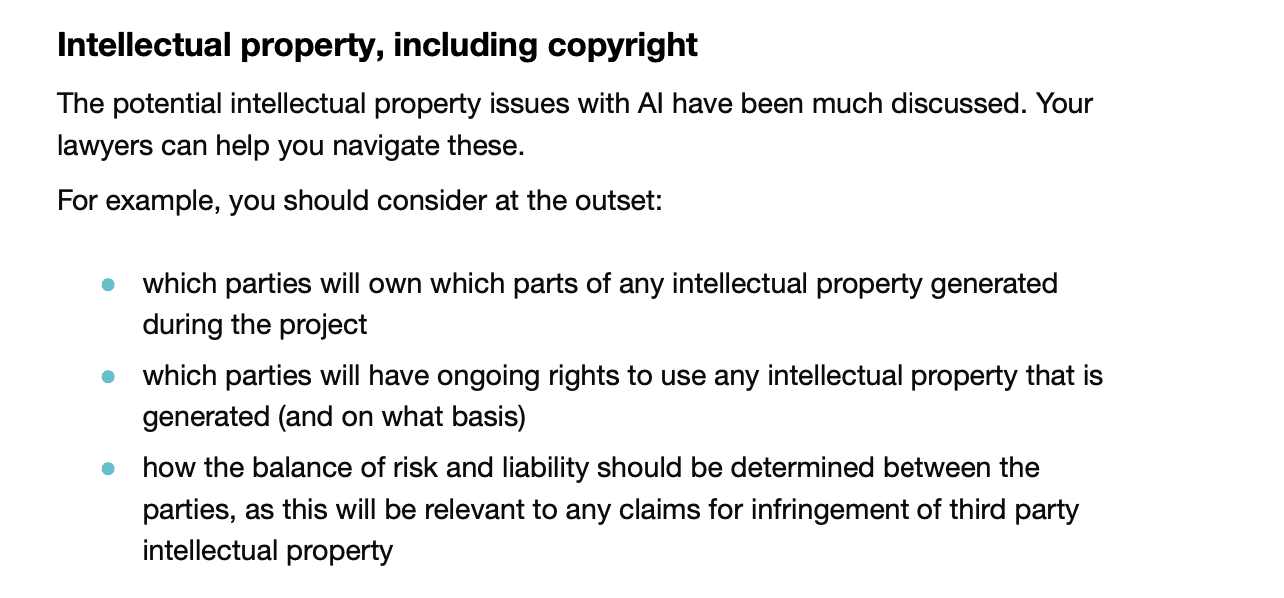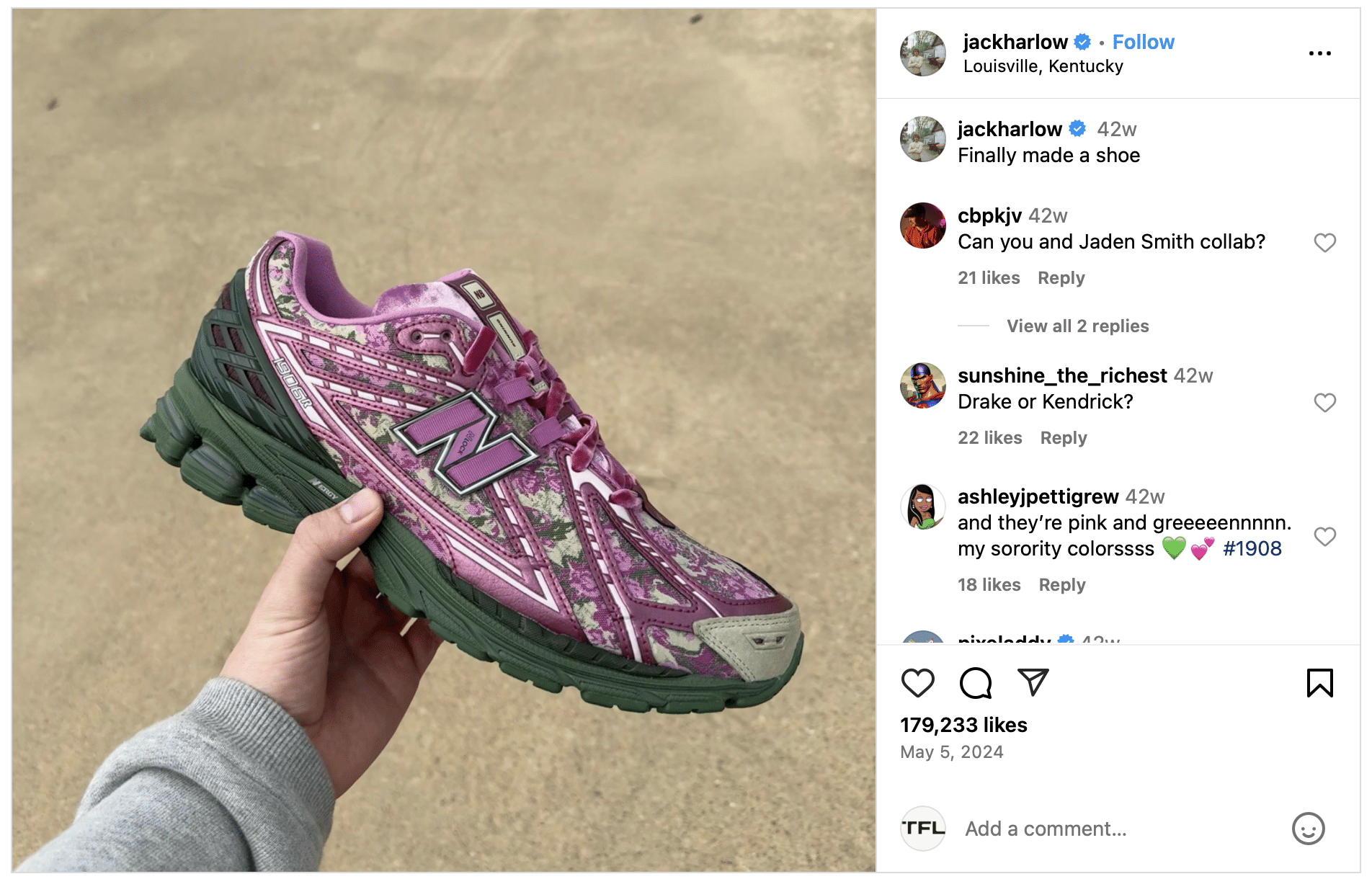On Thursday, the UK’s Government Digital Service (“GDS”) published principles for AI use in government and public sector organizations. In a very small nutshell, the report calls on individuals in government departments and public sector organizations to use AI responsibly, securely, and ethically with appropriate human oversight, the right tools, and effective lifecycle management. Collaborate openly, involve commercial teams early, ensure necessary expertise, and align with organizational policies.
Of particular interest to me was the extent to which the GDS addressed intellectual property, and it was not terribly significant (the 114-page paper mentions IP just 13 times), with the bulk of the focus coming via the following blurb …

If you caught Gucci’s F/W25 show this week, you likely noticed that no shortage of designs that went down the runway featured a take on its traditional horsebit insignia. (There were full horsebit-adorned accessories in the mix, too.) In putting an altered take of its classic horsebit on display, Gucci may be making something of a creative play from a trademark POV – it may be working to get itself a (relatively) new indicator of source, one that it can (more) aggressively enforce.
While Gucci maintains rights in and registrations for the full horsebit motif, which it has used for decades, the market – both at the high end and on the fast fashion end – is still flooded with lookalike takes on it. And in fact, other brands have also used the horsebit icon for decades, which is exactly what Italian footwear co. Silvani Lattanzi argued in response to a trademark case waged against it by Gucci.

By putting the spotlight this season (and maybe seasons to come) on the less common half-a-horsebit, which the brand has previously used on footwear and eyewear, Gucci may be angling to amass rights in it akin to the full horsebit – but ideally, with fewer competing uses to stand in the way of its arguments for distinctiveness, etc. While Hermès has a half horsebit of its own, the two companies’ cut-in-half horsebit designs are visually pretty different.
It is worth noting that this would not be the first time that a company has chopped one of its marks in half and sought to use (and protect) the resulting thing as a trademark. Chanel comes to mind here with its use of and registration for half of its double “C” in a circle logo, as does Supreme’s adoption – and registration – of “SUP” – stylized in the same way as its full word mark. I have not seen any Gucci-filed applications to register its half-mark (yet) but stay tuned.
I dove into a few of the new industry reports and brand rankings that came out this week so that you don’t have to …
> Saks’ Global Luxury Pulse
In the latest version of its Global Luxury Pulse report, which stems from a quarterly survey that tracks luxury consumer attitudes towards shopping, spending, and the economy, Saks found that the luxury consumer is “feeling less optimistic about the economy, however, they remain engaged in luxury shopping.” Based on the results of its January 16-22, 2025 survey of 1,688 U.S.-based adult luxury consumers, Saks says that 58% of respondents indicated plans to continue spending the same or more on luxury, and 94% said they are likely to engage in activities that will help to better personalize their shopping experience.
>> Personalization: At a slightly higher rate than the same time last year, the luxury consumer continues to find the most value in personalized content and recommendations that provide exclusive access to limited stock products, rewards and offers.
>> AI: 66% of luxury consumers said they are using AI features when shopping for fashion online, an increase of 2 percentage points compared to the same time last year. Respondents most commonly use AI for online shopping by providing body measurements to receive size recommendations or visualize a product on various body types.
However, respondents indicated that they are increasingly unlikely to upload pictures of themselves for virtual try-on. (A note from JZ: That sentiment is likely driven by privacy consumers, as biometric data lawsuits against major fashion/luxury brands have garnered mainstream headlines.)
> HSBC Report on Luxury in the UK
A separate report brings more sobering insights, with HSBC finding that “higher-earning” younger consumers don’t necessarily want more logo-ed luxury goods. Based on a survey of its own, 49% of Gen Z consumers (aged 18 to 24) in the UK “consider wealth in non-material terms” and said that “a strong work-life balance to be a firm signifier of wealth” than luxury goods. Meanwhile 35% of consumers between 35 and 44 years of age said the same. In a further emphasis on eschewing stuff, survey respondents said that early retirement and/or frequent international travel – along with financial or property investment and investments in education or self-improvement – is more a symbol of wealth than luxury goods.
> Ad Age-Harris Poll’s Q4 Gen Z Brand Tracker
New Balance, Gap, Uniqlo and Ugg gained traction among Gen Z consumers during the last 3 months of 2024, according to the Ad Age-Harris Poll Gen Z brand tracker, which ranks brands that “made significant progress in gaining attention from Gen Z.”

“Fashion brands have long courted young consumers, but some big names—including Gap and UGG—are gaining momentum with Gen Z shoppers by leaning into the marketing trends and ideals that are attractive to them,” said Harris Poll CEO Will Johnson said. The driving force behind much of their success: “Celebrity and streetwear partnerships and retro lines.”
On Wednesday, in a unanimous opinion, the US Supreme Court overturned a $43 million trademark infringement award on the basis that trademark plaintiffs cannot recover profits from affiliates of the defendant’s when those affiliates are not named (as defendants) in the case.

In a note, Jenner & Block stated that the Supreme Court’s ruling likely will “not significantly alter the landscape of damage awards in Lanham Act cases, as litigants can respond to this ruling by naming all related corporate entities as defendants in trademark cases.”
The Court of Milan has brought an early end to the tenure of a court-appointed commissioner, who was tasked with overseeing the operations of Dior Manufactures SRL, an LVMH-owned maker of Dior-branded handbags, following an investigation into four of its suppliers in and around Milan “uncovered illegal working conditions for staff.” While the commissioner was initially slated to stay in the post for a year beginning in June 2024, on Friday, the court confirmed that the LVMH-affiliated company has implemented the necessary organizational model and supplier control measures, thereby, alleviating the need for further oversight.
“The fashion house resolved relationships with ‘at-risk’ suppliers extremely quickly and also developed several best practices that received court approval,” the Court of Milan stated on Friday, noting that the company demonstrated “a deep understanding of the rationale behind the measure, and saw this as an opportunity to strengthen and implement internal checks, aimed at avoiding a repetition of similar events.”